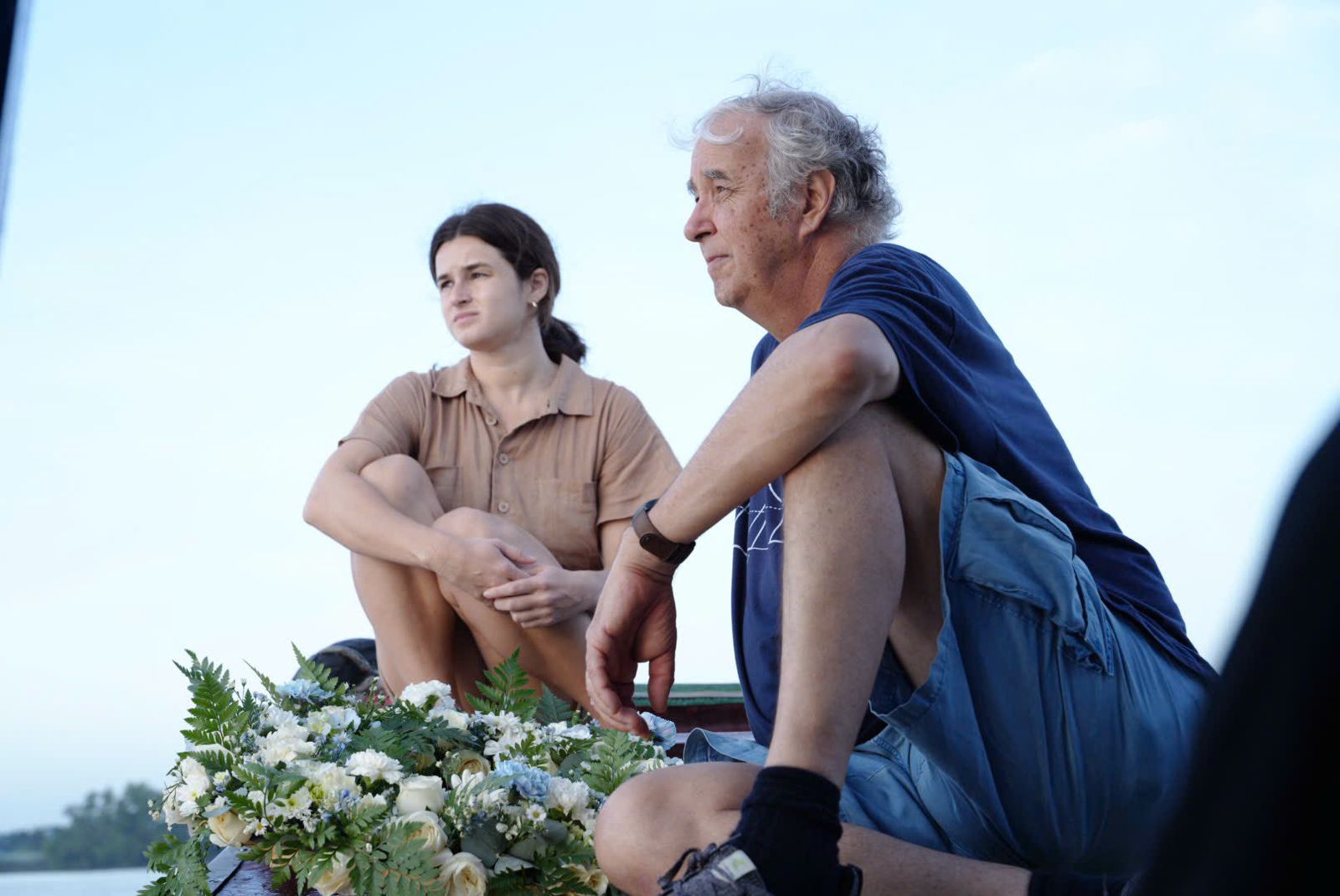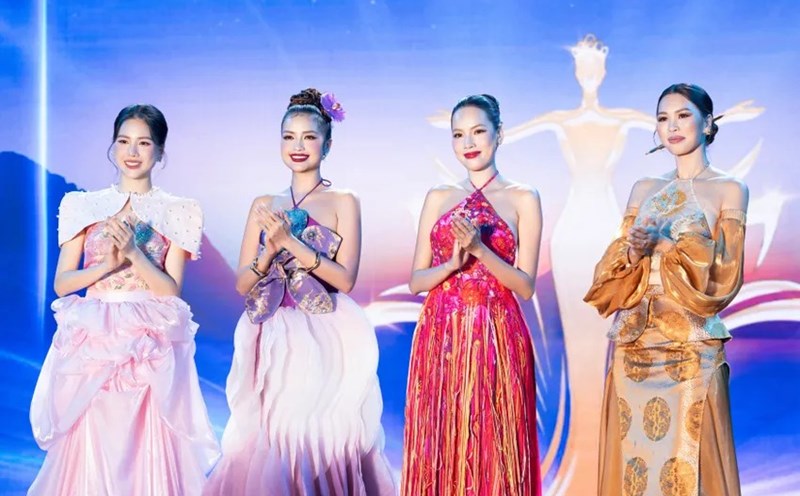On the occasion of the 78th anniversary of War Invalids and Martyrs Day (July 27,47 - July 27, 2025), Lao Dong had a special conversation with Ricardo Preve - an Argentine director, who has just completed filming the documentary "A Price We Have to Pay" in Vietnam. The film tells the final journey of Ignacio Ezcurra - an Argentine battlefield reporter who went missing in Saigon in 1968,
Welcoming director Ricardo Preve, making a documentary about Ignacio Ezcurra must have been a special journey. What made you decide to go to Vietnam to tell this story?
- Ignacio Ezcurra is not well known in Argentina, so I want to tell the story of him to the people of the country. We came to Vietnam not to record Ignacio's historical milestones, but to go back in time, to the places he has gone through, to feel what he has experienced.
It was like a return to the memory of a war reporter. How did you and your team follow Ignacio's last footsteps in Vietnam?
- Ignacio has only been in Vietnam for a very short time. He arrived at the end of April 1968 and died just a few weeks later. Ignacio disappeared in Cho Lon on the afternoon of May 8, 1968, at the intersection now known as Minh Phung and Hong Bang streets.
Thanks to the photos taken at that time, we could pinpoint the exact location where he fell. In addition, we also recorded at many places close to him: Rex Hotel - a press conference for foreign reporters; before Dinh Doc Lap - where Ignacio answered an interview on American television a few hours before his death; and a hotel on Dong Khoi Street where he had stayed.
At each location, I felt his very close presence, as if he had just been there... We wanted to recreate the somewhat diverse context of space, people and circumstances that Ignacio may have experienced in that short period of time.
Ignacio Ezcurra was born in 1939 in San Isidro, graduated from high school in 1956 and received a journalism training scholarship from the University of Missouri (USA) in 1960. He officially worked at La Nacion - Argentina's leading daily newspaper since 1962. Ignacio got married in 1965, has two children, and has been practicing in the Middle East and the US. Urged to learn the truth about the war on the other side of the world, Ignacio was determined to leave his hometown and return to Vietnam in April 68. He made his mark on brutal fronts such as Hue and Saigon, working during the 1968 oil and gas campaign before missing and passing away in Saigon in May of that year. His grandson - Luisa duggan - once returned to Vietnam with Ignacio's own Pentax H3 camera, recording the image of the country in peacetime. Ezcurra's family donated his relics to the War Relics Museum.
Which moment or location in Vietnam left the strongest impression on you?
- We must mention the alley at 25 Ba Ky Street in Cho Lon (HCMC) - where journalist Ignacio Ezcurra was recognized as having sacrificed, through a photo taken by a Japanese photographer.
A truly touching moment was when we filmed on the Mekong River near My Tho (Dong Thap). We released a blue and white wreath - the color of the Argentine flag - into the water. We have gone halfway around the world to commemorate a young man from Argentina who fell while on duty as a war reporter in Vietnam.
And the image of that wreath waiting to flow, as if bringing Ignacio back to his homeland, family, children and friends, for me is an extremely strong symbol.
At that moment, I felt like we were concluding an unprecedented journey - bringing him home. The green and white flowers blend into the golden waters of the river under the dawn light, as a beautiful symbol of the connection between Vietnam and Argentina - something we hope the film can touch.
What approach did you choose to both tell the story associated with war and reflect a modern Vietnam in this documentary?
- One of my goals is to avoid falling into the wrong path of many Western films - that is, just looking at Vietnam through the lens of the war with the US. Vietnam's history spans thousands of years and has gone through many wars of independence - in which the resistance war against the US was just a slice.
Moreover, after half a century of unification, Vietnam has risen strongly in many fields. We want to reflect that in images - a dynamic, vibrant and vibrant Vietnam today. I believe that if Ignacio were alive, he would also be very interested in Vietnam today and agree with our approach.
This film is not only about war but also about people and culture. So how does the crew portray the image of Vietnamese people in the film?
- Cinema is the language of image. Instead of using dialogue, we chose to use wartime documentary footage to express the resilience of the Vietnamese people. We also interviewed a Northern veteran, so that the audience could better understand the feeling of fighting and sacrificing - at the right time Ignacio was here. The contrast between a Vietnam devastated by bombs and bullets and a Vietnam full of vitality today is the clearest way to demonstrate the resilience of the Vietnamese people.
During filming, did your crew encounter any challenges?
- really, everything went very smoothly. We have prepared for some situations such as heavy rain or traffic congestion, but thanks to the professionalism and dedication of our Vietnamese staff, all difficulties are handled gently.
We are extremely grateful that the Vietnamese Ministry of Culture, Sports and Tourism has granted the film crew a license to access all locations needed for filming, along with the support of museums, libraries and hotels here.
Finally, what do you expect from Vietnamese audiences when the film is released?
- I may be a bit ideal, but I believe in the power of cinema in connecting people from very different cultures. When we watch a film with images and sounds from a faraway place, we learn to be empathy. And when they understand, it will be difficult for people to hurt each other. I hope the film will help Vietnam and Argentina get closer - not only through the story of Ignacio, but also through the human values that we share.

Ricardo Preve, born in 1957, is an Argentine documentary filmmaker, photographer and social activist. He is the author of Chagas: The Forgotten Disease (2005) about an infectious disease in the Latino community that has received little attention; Coming home (2019) about the journey to bring the remains of a former sailor in World War II, an Italian, back to his hometown after 70 years; Sometime, Somewhere (2023) about the life of the Spanish-speaking community without documents in the US... Ricardo Preve received many domestic and international awards in the documentary category such as Emmy, the Northern International Film Festival, the Virginia Film Festival (USA)... In 2020, he was awarded the Gold Medal of the Italian Navy in 2020 for Coming home and contributions to the army of this country.











